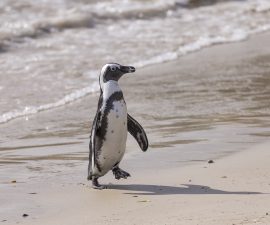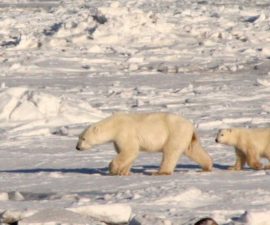BY Wendy Perkins
Photography by Ken Bohn
At first glance, a Somali wild ass looks oddly familiar—with just enough of a difference to give a person pause. Combining visual cues of long sturdy legs, an elongated muzzle, and large swiveling ears helps identify the animals as a sort of horse—of course! Yet while this species has the physical characteristics of other equids (horses and zebras), they have a lifestyle that sets them apart.
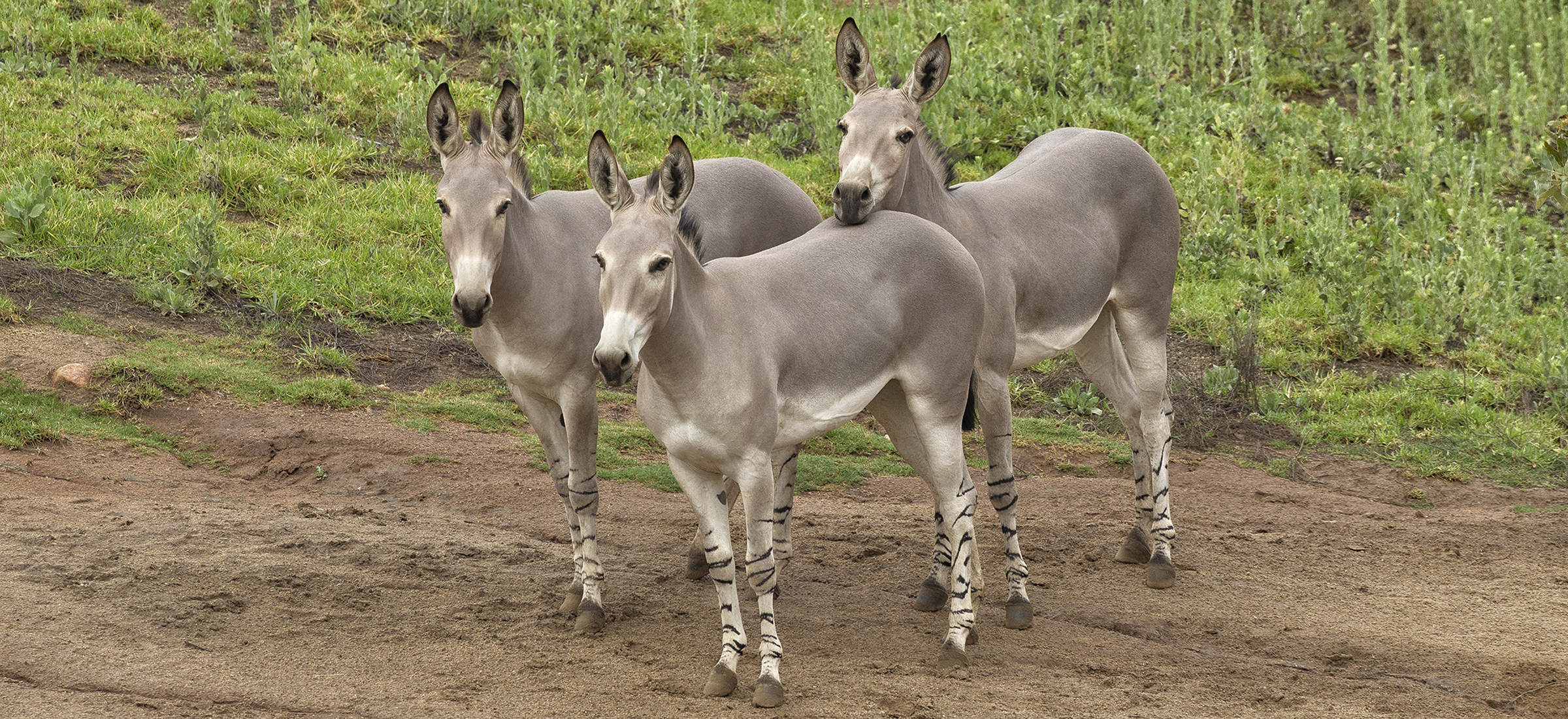
Small and Sturdy
The smallest of all wild equids, a mature Somali wild ass Equus africanus somaliensis stands about 4 feet tall at the shoulder and weighs a “dainty” 600 pounds. The short hair of their fine pelage is a soft shade of gray on most of the body, but the belly fur is white. Unique among all wild horses and asses, Somali wild asses have horizontal stripes on their lower legs.
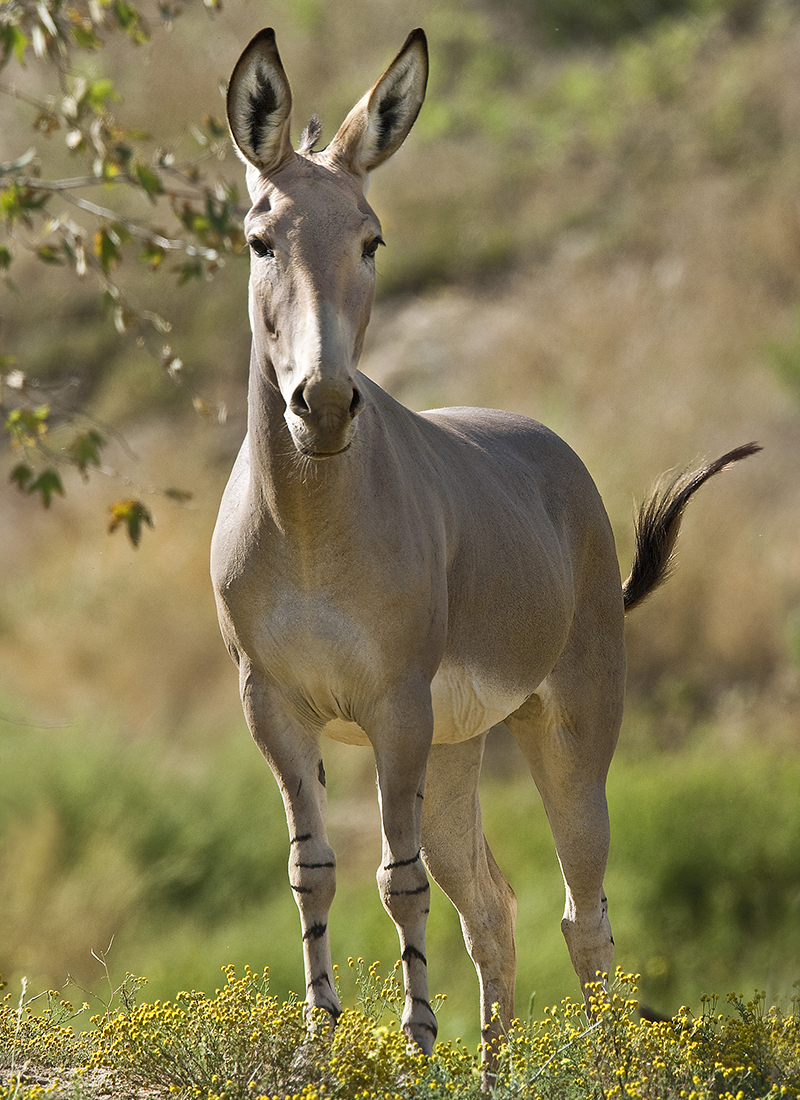
FINE EQUINE
The Somali wild ass’s powerful body, nimble legs, and keen senses are key to its survival in harsh habitats.
Native to the arid regions of the Horn of Africa—Somalia, Ethiopia, and Eritrea—the Somali wild ass is an herbivore adapted to survive in a seemingly barren landscape. Its narrow hooves give it more stable footing over the stony ground. When it comes to clambering up rocky hillocks, the small feet are more nimble than the wider hooves of their relatives. Yet while these physical adaptations help the ass maneuver in its harsh habitat, other threats loom on the horizon and have begun to roll into reality.
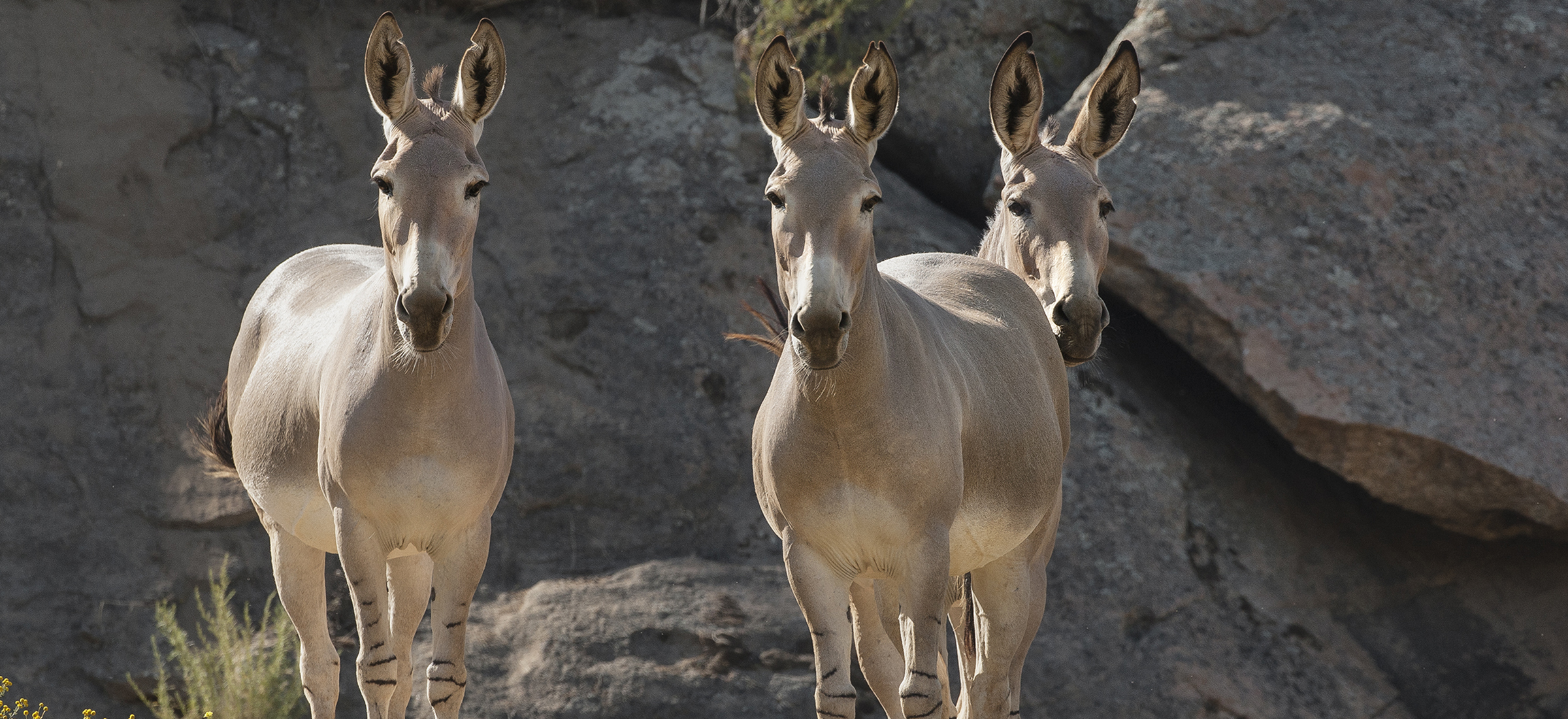
Mealtime
Grasses make up most of this animal’s diet, but bark, leaves, and bits of tough desert plants are on the menu, too—variety is the staff of life. Like so many herbivores, a Somali wild ass lowers its muzzle to the ground to employ its sensitive whiskers and sense of smell as it chooses what to eat. Pulling a morsel into its mouth with flexible lips, the ass clips the plant material with upper and lower incisor teeth. With a swish of the tongue, the greens are moved back to the broad molars and are pulverized.
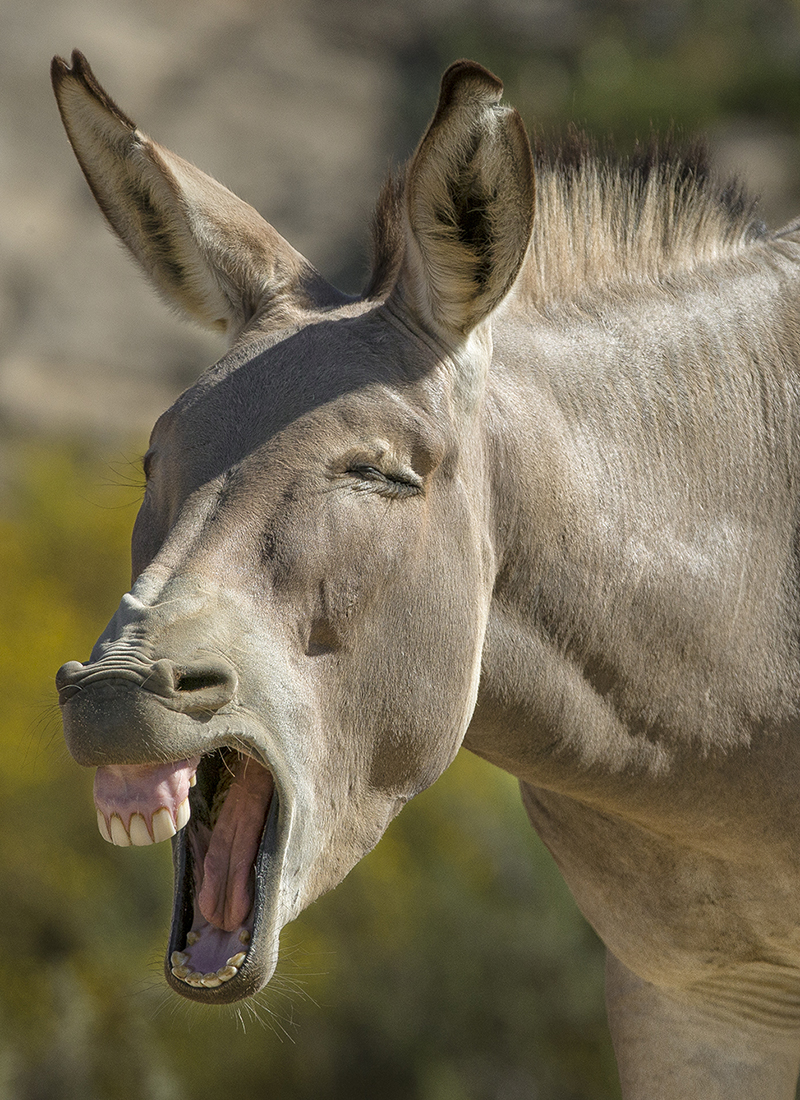
SHOUT OUT
The characteristic, loud bray of asses (including domestic donkeys) is a two-breath call. A deep inhalation yields the “hee” sound, while the “haw” flows with exhalation.
The beverage portion of the meal is often lacking, but these hardy hoofed wonders do just fine. Although they can go for two to three days without taking a drink of water, they do need to supplement the miniscule amount of moisture contained in their food. Because of this, they tend to stay within about 20 miles of a water source. This dependence on a standing water source means that severe and extended droughts occurring in their range can have devastating effects on the already small population—there are only approximately 600 Somali wild asses throughout the Horn of Africa.
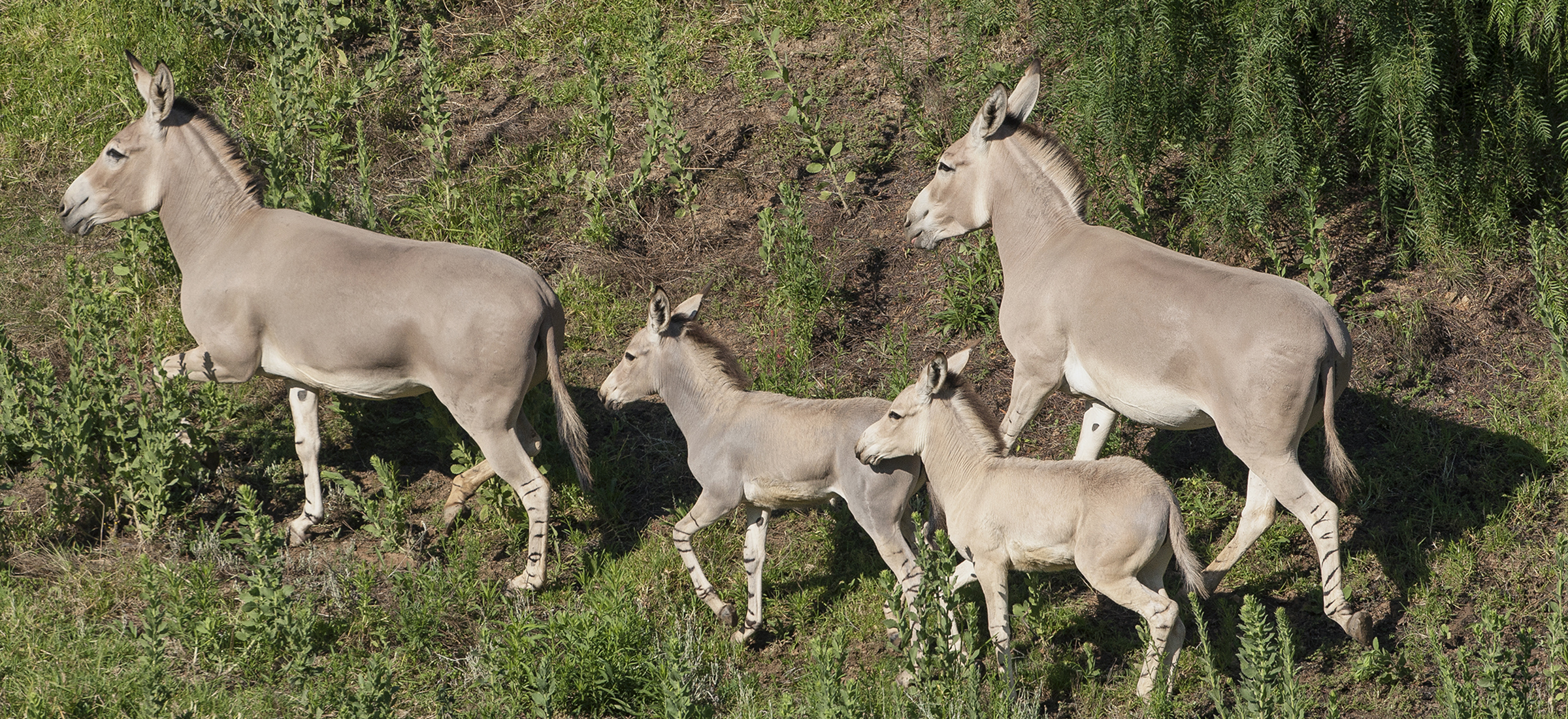
Fluid Society
Most wild equids are known for herd-life, yet because of the limited resources in their habitat, the Somali wild ass has more of a fission-fusion social approach. They mostly live alone, but sometimes form small herds of females and their young. This is the “fission” form of their society. In areas that get more rain (and have more food and water), they sometimes come together, fusing into larger, but temporary, herds.
Stallions establish territories sometimes measuring as large as nine square miles. As they make the rounds of their boundaries, they quite deliberately leave piles of dung as markers. Some studies suggest that these “signposts” are not so much a warning to intruders to stay out as they are reminders to the stallion as to where his territory ends. Mares are always welcome, of course, as they are key to the male promoting his genetics. Interestingly, while a stallion vigorously keeps other males from breeding mares within his realm, he can also be a “fair-weather friend,” allowing other males to feed in his territory. As long as the visitors mind their manners, they are tolerated.
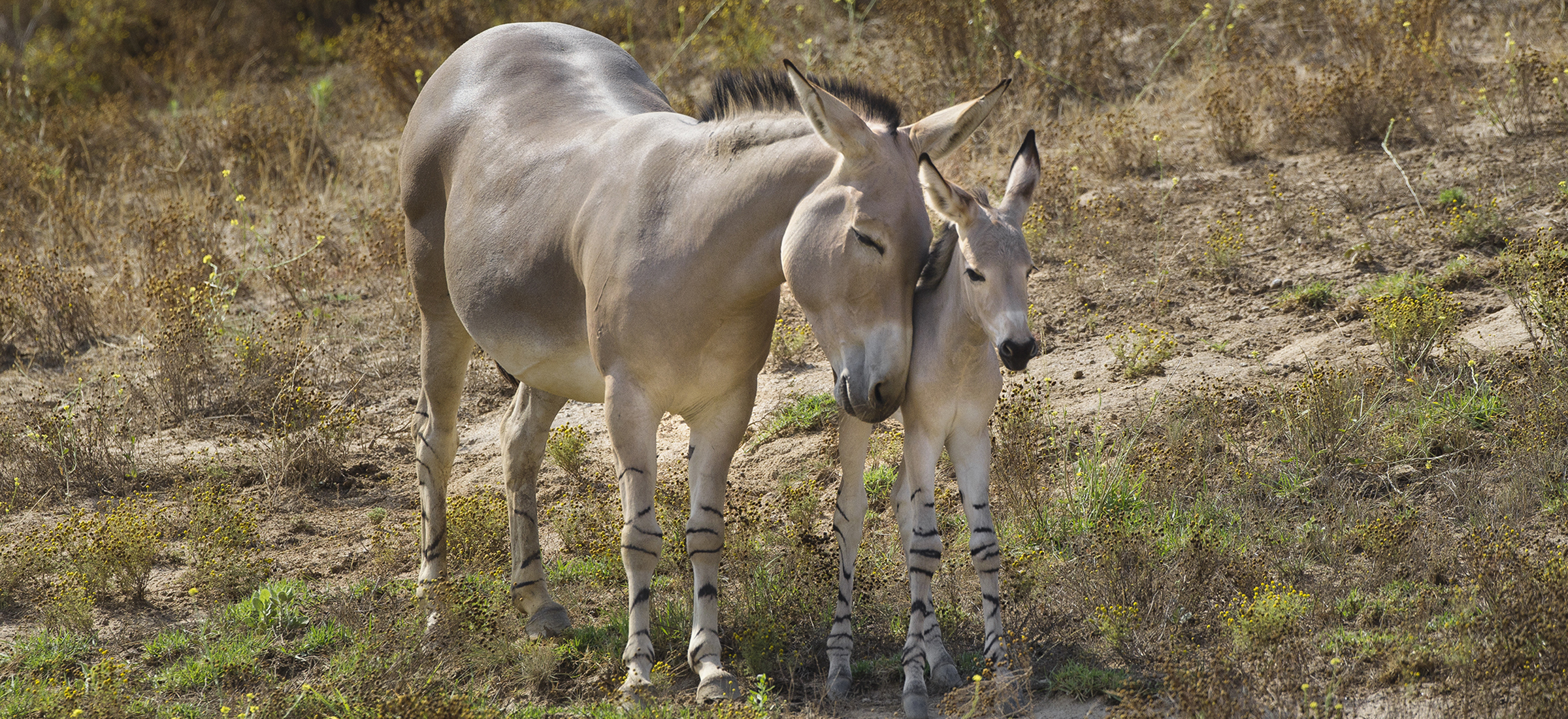
Up and Away
A Somali mare drops a foal (sometimes twins) after a year’s gestation. Like other equids, the youngster is on its feet within hours, and once it works the wobbles out of its legs, it can keep up with mom just fine. The little one begins nibbling plants at about five days old. By the time it’s about two weeks old, it’s grazing regularly—but still depends on its mother’s milk for fluid. Even after weaning at 12 to 14 months old, the foal stays close to its mother, stepping away only to feed or play with other foals in the group.
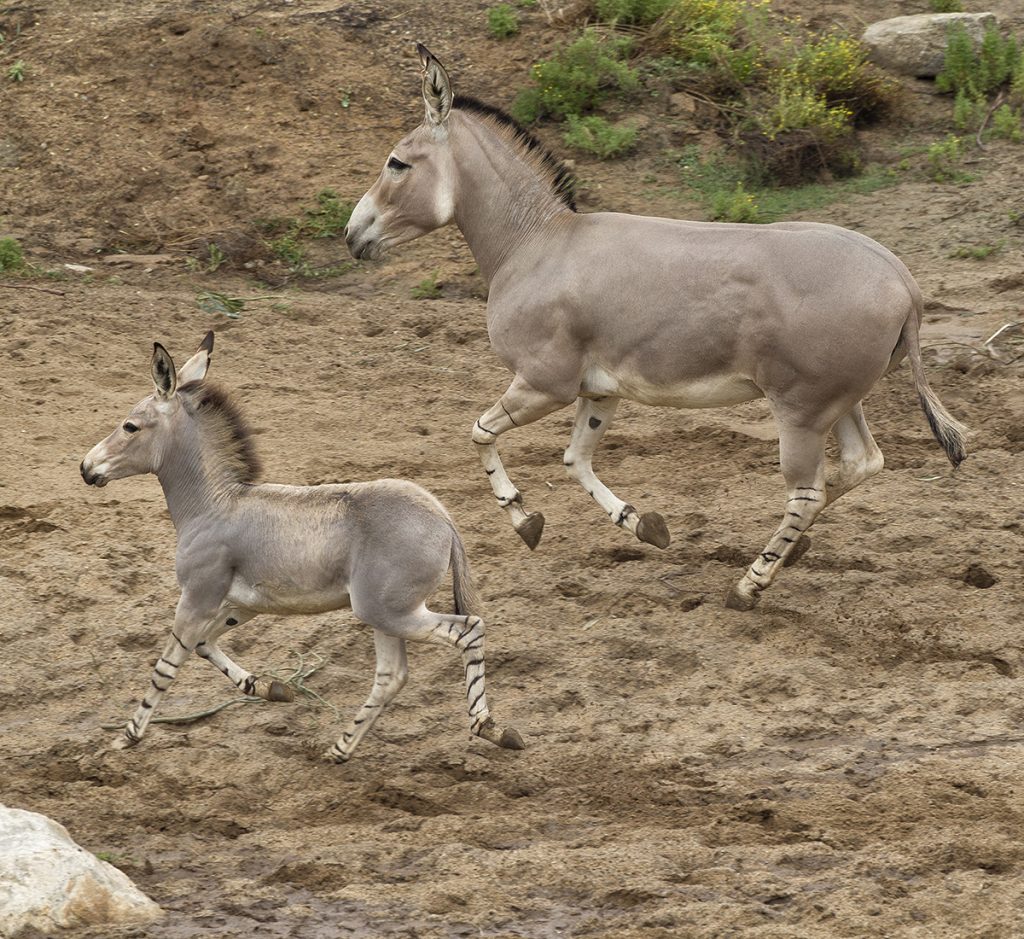
FOAL PLAY
Romping and racing builds a foal’s muscle strength, coordination, and lung capacity—all important to avoiding predators.
Over the past few months, riders on the San Diego Zoo Safari Park’s Africa Tram have been delighted by the antics of some of the newest members of our Somali wild ass herd. Three foals born in early spring have been romping, rearing, bucking, and chasing one another around their habitat. The foals are a point of pride for keepers at the Park, as we are home to more members of the species than any other zoo in North America, and have been working to plump the population since the 1980s. Our first group of these African asses came from the Basel Zoo in Switzerland in 1981, with the first foal born in 1986. Since then, we have welcomed the births of 46 foals, as part of our efforts to help this critically endangered species.
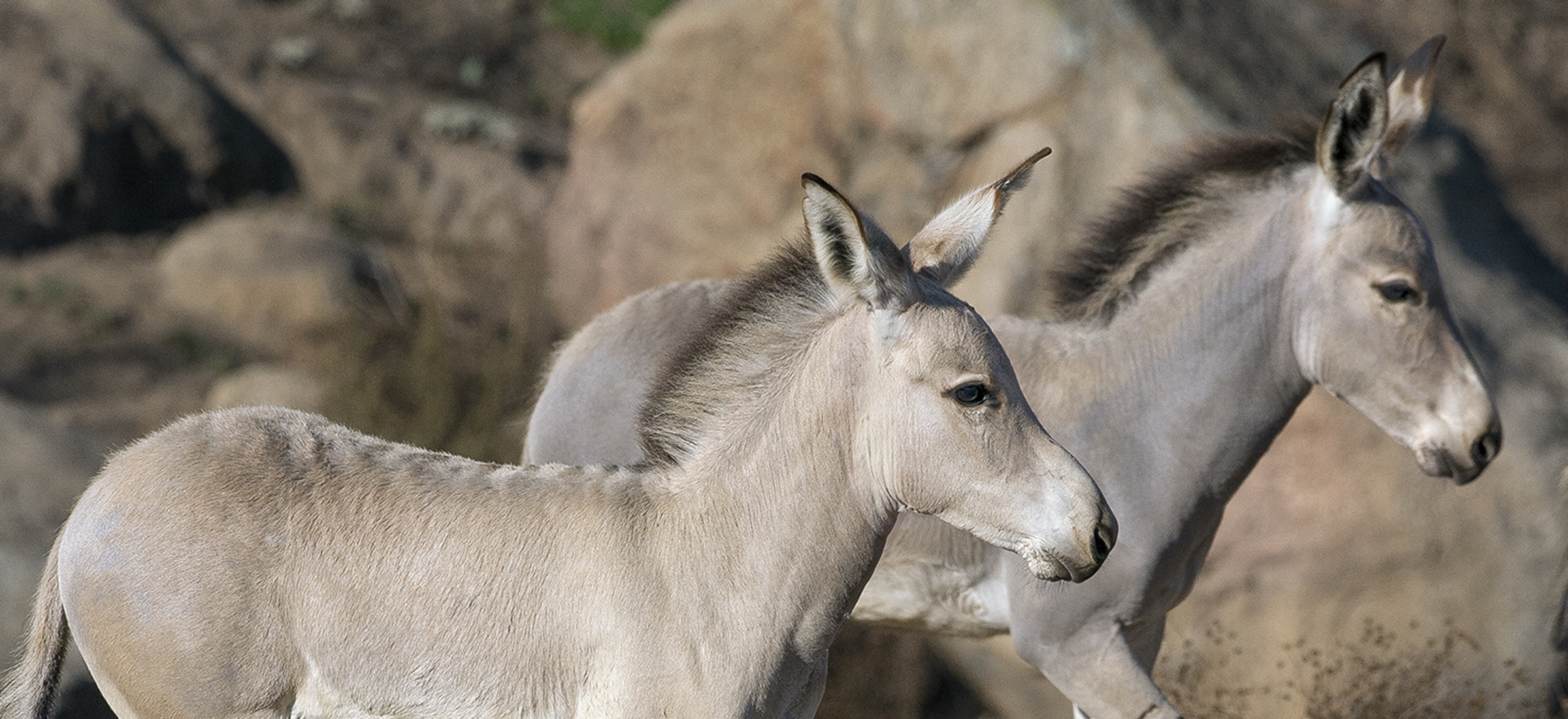
The Edge of Existence
For many decades, Somali wild asses have been heavily hunted. They are seen as a food source for some local people, but also as a component in traditional remedies—their fat is sought after as a treatment (with undocumented success) for tuberculosis and hepatitis. In addition, these animals must compete with humans and their livestock for food and water. When domestic asses—descended from wild asses over thousands of years—come into contact with their wild relatives, interbreeding occurs. In some cases, this is deliberate on the part of human livestock owners. The latter leave domestic mares near a water hole in hopes a wild stallion will breed them and strengthen the bloodline. However, the opposite result—domestic males breeding wild females as they wander and graze—threatens the genetic integrity of the already precarious wild population.
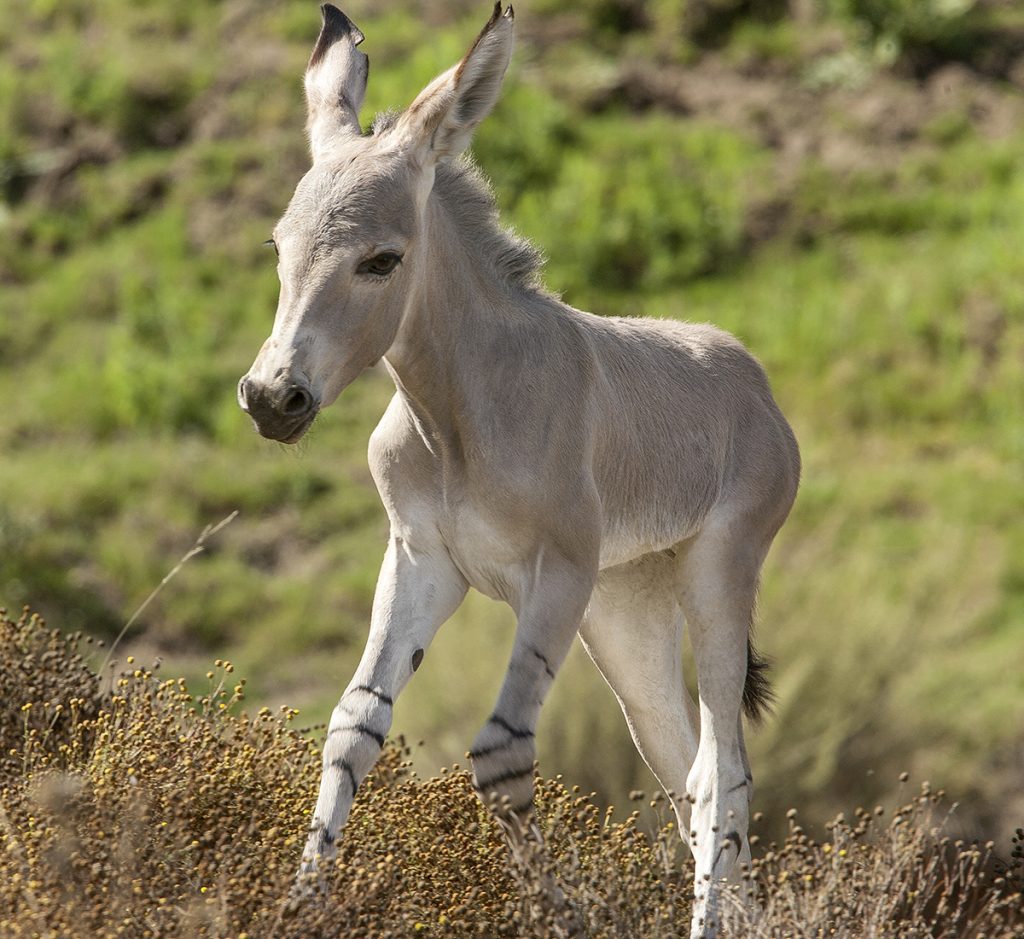
FIGHTING FOR THEIR FUTURE
It’s believed only approximately 600 Somali wild asses remain in the wild. San Diego Zoo Global is proud to be part of the efforts to keep this species’ gene pool growing through careful breeding.
San Diego Zoo Global is committed to helping species survive. And the new hooves on the hill at the Safari Park are a joyful “win” in our efforts to end extinction, and share the wonders of wildlife with as many minds and hearts as we can reach.


